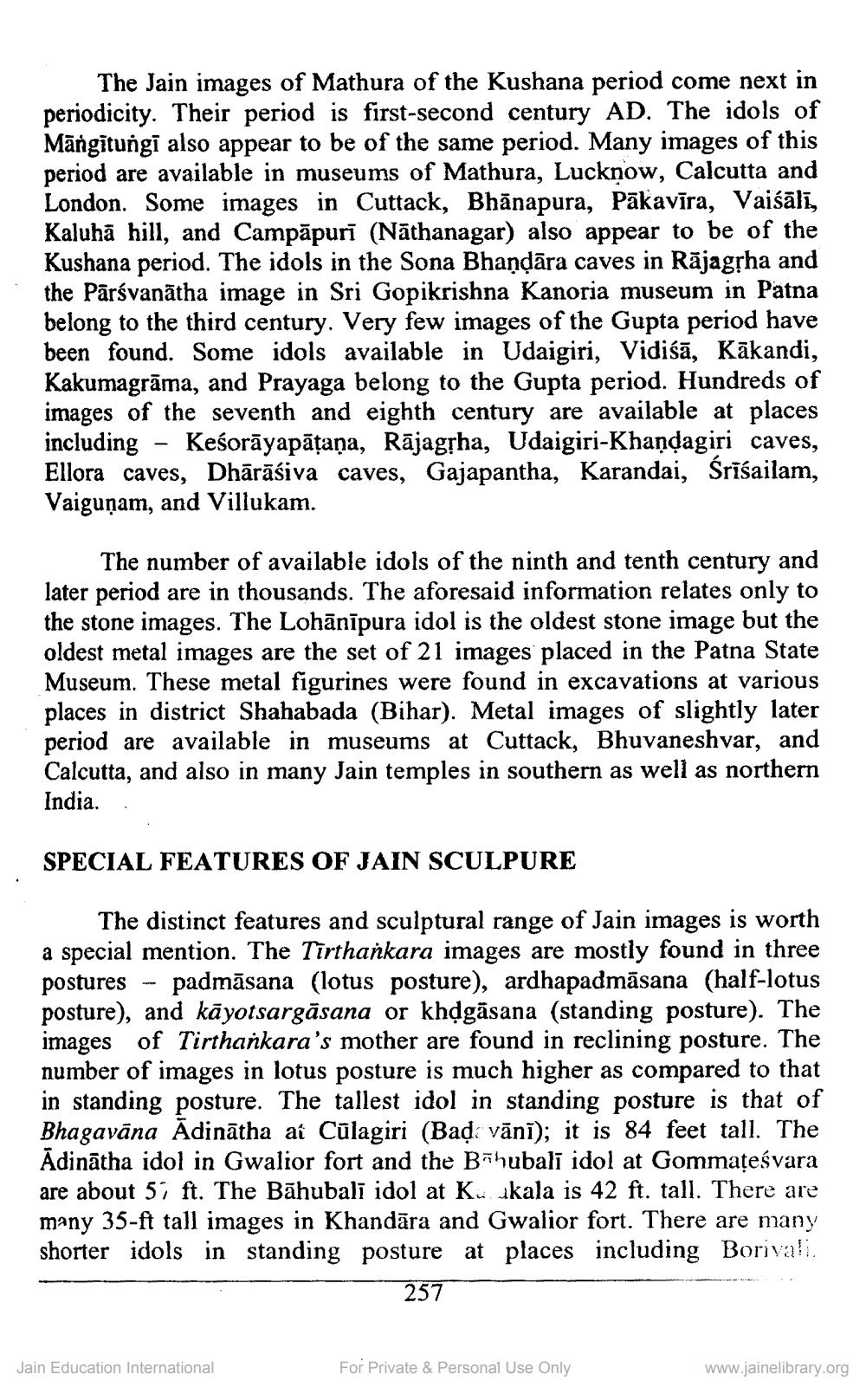________________
The Jain images of Mathura of the Kushana period come next in periodicity. Their period is first-second century AD. The idols of Māngītungi also appear to be of the same period. Many images of this period are available in museums of Mathura, Lucknow, Calcutta and London. Some images in Cuttack, Bhānapura, Pākavīra, Vaiśālī, Kaluhā hill, and Campāpuri (Nāthanagar) also appear to be of the Kushana period. The idols in the Sona Bhandāra caves in Rājagļha and the Pārsvanātha image in Sri Gopikrishna Kanoria museum in Patna belong to the third century. Very few images of the Gupta period have been found. Some idols available in Udaigiri, Vidiśā, Kākandi, Kakumagrāma, and Prayaga belong to the Gupta period. Hundreds of images of the seventh and eighth century are available at places including - Keśorāyapāțaņa, Rājagļha, Udaigiri-Khaņdagiri caves, Ellora caves, Dhārāśiva caves, Gajapantha, Karandai, Śrīśailam, Vaiguņam, and Villukam.
The number of available idols of the ninth and tenth century and later period are in thousands. The aforesaid information relates only to the stone images. The Lohānīpura idol is the oldest stone image but the oldest metal images are the set of 21 images placed in the Patna State Museum. These metal figurines were found in excavations at various places in district Shahabada (Bihar). Metal images of slightly later period are available in museums at Cuttack, Bhuvaneshvar, and Calcutta, and also in many Jain temples in southern as well as northern India.
SPECIAL FEATURES OF JAIN SCULPURE
The distinct features and sculptural range of Jain images is worth a special mention. The Tirthańkara images are mostly found in three postures - padmāsana (lotus posture), ardhapadmāsana (half-lotus posture), and kāyotsargāsana or khợgāsana (standing posture). The images of Tirthankara's mother are found in reclining posture. The number of images in lotus posture is much higher as compared to that in standing posture. The tallest idol in standing posture is that of Bhagavāna Ēdinātha ai Cūlagiri (Bad vānī); it is 84 feet tall. The Ādinātha idol in Gwalior fort and the Bahubali idol at Gommatesvara are about 57 ft. The Bāhubali idol at Ku kala is 42 ft. tall. There are many 35-ft tall images in Khandāra and Gwalior fort. There are many shorter idols in standing posture at places including Borivali.
257
Jain Education International
For Private & Personal Use Only
www.jainelibrary.org




